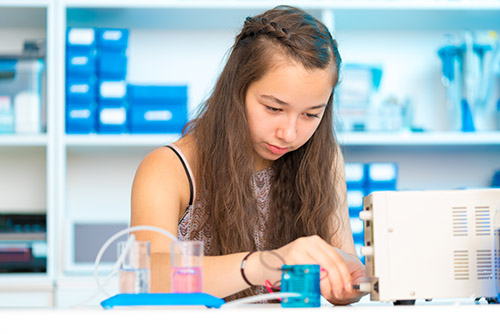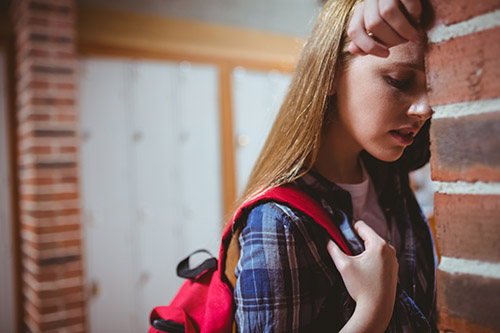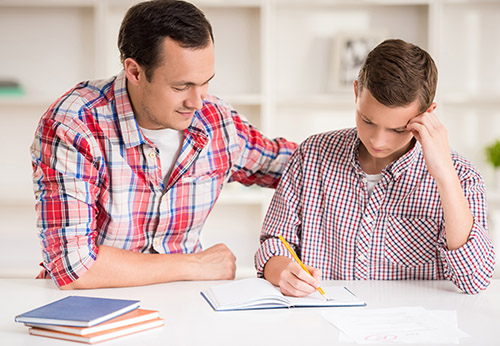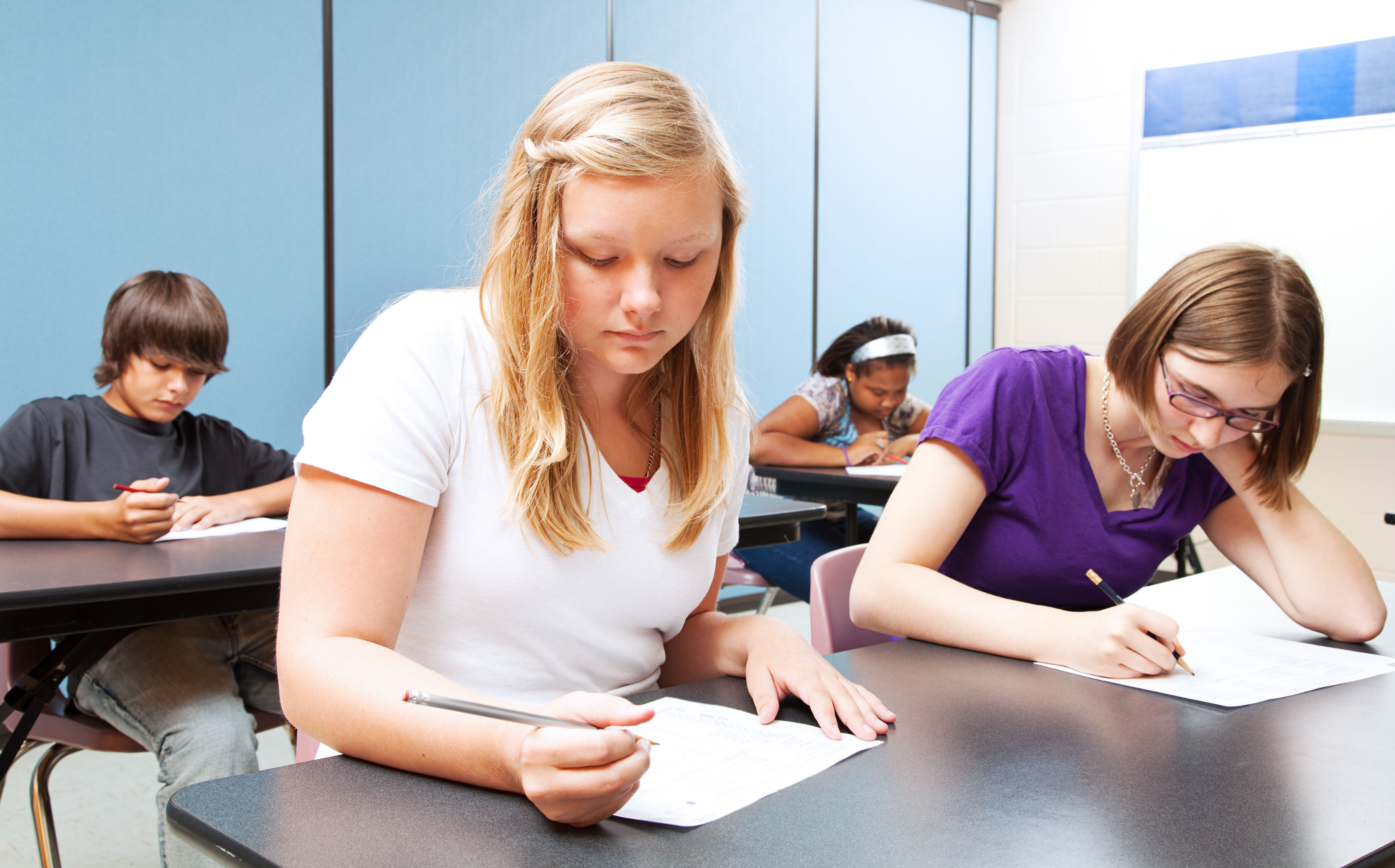“Perhaps the most distressing threat to student well-being is bullying, and it can have serious consequences for the victim, the bully and the bystanders.” — Andreas Schleicher
“When disenfranchised youth from the heart of our countries, who have ticked all the boxes of formal education, join the Islamic State to turn the historic multi-ethnic and multi-religious powerhouses of the Middle East back into monocultures, something has gone wrong seriously,” says Andreas Schleicher. A new global study by the OECD/PISA of approximately 540,000 students in 72 countries clearly shows that over the last decade student well-being has seriously declined. What are the causes of young people’s stress and anxiety? Is it too much testing, bullying, social isolation or poor home life? The Global Search for Education welcomes Andreas Schleicher, OECD Director for Education and Skills, to discuss the latest data on student well-being as well as solutions moving forward.
“Students are about 62% more likely to get very tense when they study, and about 31% more likely to feel anxious before a test if they perceive that their teacher thinks they are less smart than they really are.” — Andreas Schleicher
Andreas, the number of kids saying they are bullied is deeply concerning. Those that are bullied feel like an “outsider at school”. What more can schools and communities do to combat bullying?
Perhaps the most distressing threat to student well-being is bullying, and it can have serious consequences for the victim, the bully and the bystanders. Bullying can be inflicted directly, through physical (hitting, punching or kicking) and verbal (name-calling or mocking) abuse. And then there is relational bullying, where some children are ignored, excluded from games or parties, rejected by peers, or are the victims of gossip and other forms of public humiliation and shaming. PISA highlights a significant prevalence of all these forms. On average across OECD countries, around 11% of students reported that they are frequently (at least a few times per month) made fun of, 7% reported that they are frequently left out of things, and 8% reported that they are frequently the object of nasty rumors in school. And around 4% of students – roughly one per class – reported that they are hit or pushed at least a few times per month, a percentage that varies from 1% to 9.5% across countries. Students who are frequently bullied may feel constantly insecure and on guard, and have clear difficulties finding their place at school. They tend to feel unaccepted and isolated and, as a result, are often withdrawn: On average across OECD countries, 42% of students who reported that they are frequently bullied – but only 15% of students who reported that they are not frequently bullied – reported feeling like an outsider at school.
There is no one-size-fits-all approach to preventing bullying. Schools must do more to foster an environment of safety, tolerance and respect for children. A coordinated, international analysis of existing strategies and support mechanisms can shed light on what schools can do in the difficult struggle to assure students’ safety at school, and what national and local authorities can do to support schools in this effort. Schools must work for more effective anti-bullying programs following a whole-of-school approach that includes training for teachers on bullying behavior and how to handle it, and strategies to provide information to and engage with parents. Teachers need to communicate to students that they will not tolerate any form of bullying; and parents need to be involved in school planning and responses to bullying. In fact, victimization of bullying is less frequently reported by students who said that their parents support them when they face difficulties at school. And yet, only 44% of the parents of frequently bullied students reported that they had exchanged ideas on parenting, family support, or the child’s development with teachers over the previous academic year.
Anxiety about schoolwork is cited as a key source of student stress in your report. What can be done?
It is tempting to equate low levels of life satisfaction in East Asia or elsewhere to long study hours, but the data show actually no relationship between the time students spend studying, whether in or outside of school, and their satisfaction with life. And while educators often clamor that anxiety is the natural consequence of testing overload, the frequency of tests are also unrelated to students’ level of school-related anxiety. But while it is not the frequency of testing that affects student well-being, students’ perception of tests as threatening has a clear influence on how anxious students feel about tests and indirectly on learning outcomes. So that’s what teachers and schools need to address: Even after accounting for students’ performance, gender and socio-economic status, students who said their teacher adapts the lesson to the class’s needs and knowledge were less likely to report feeling anxious when they are well prepared for a test, or to report that they get very tense when they study. Students were also less likely to report anxiety if the science teacher provides individual help when they are struggling.
 “The fear of making mistakes on a test often disrupts the performance of top-performing girls who ‘choke under pressure’.” — Andreas Schleicher
“The fear of making mistakes on a test often disrupts the performance of top-performing girls who ‘choke under pressure’.” — Andreas Schleicher
Students were more likely to be anxious about schoolwork if they perceive their teacher thinks they are less smart. Tips for teachers on this one?
Negative teacher-student relations seem to undermine students’ confidence and lead to greater anxiety: On average across countries, students are about 62% more likely to get very tense when they study, and about 31% more likely to feel anxious before a test if they perceive that their teacher thinks they are less smart than they really are. Such anxiety may be students’ reaction to, and interpretation of, the mistakes they make – or are afraid to make. Students may internalize mistakes as evidence that they are not smart enough. So teachers need to know how to help students develop a good understanding of their strengths and weaknesses, and an awareness of what they can do to overcome or mitigate their weaknesses. School grades that accomplish that goal will be an important instrument to provide feedback and encourage improvement. More frequent assessments that start with easier goals and gradually increase in difficulty can also help build students’ sense of control, as can opportunities for students to demonstrate their skills in low-stakes tests before taking an assessment that counts. It is noteworthy that in all countries, girls reported greater schoolwork-related anxiety than boys and anxiety about schoolwork, homework and tests is negatively related to performance. The fear of making mistakes on a test often disrupts the performance of top-performing girls who “choke under pressure”.
PISA finds that one major threat to students’ feelings of belonging at school are their perceptions of negative relationships with their teachers. Happier students tend to report positive relations with their teachers and students in “happy” schools (schools where students’ life satisfaction is above the average in the country) report much higher levels of support from their teacher than students in “unhappy” schools.
On average across countries, students who reported that their teacher is willing to provide help and is interested in their learning are also about 1.3 times more likely to feel that they belong at school. Conversely, students who reported some unfair treatment by their teachers were 1.7 times more likely to report feeling isolated at school. This is important. Teenagers look for strong social ties and value acceptance, care and support from others. Adolescents who feel that they are part of a school community are more likely to perform better academically and be more motivated in school.
Of course, most teachers care about having positive relationships with their students, but some teachers may be insufficiently prepared to deal with difficult students and classroom environments. Effective classroom management consists of far more than establishing and imposing rules, rewards and incentives to control behavior, it involves practices and instructional techniques to create a learning environment that facilitates and supports active engagement in learning, encourages co-operation and promotes behavior that benefits other people. A stronger focus on classroom and relationship management in professional development may give teachers better means to connect with their students and support their engagement at school. Teachers should also be better supported to collaborate and exchange information about students’ difficulties, character and strengths with their colleagues, so that they can collectively find the best approach to make students feel part of the school community.
“Students whose parents reported ‘spending time just talking’ with their children showed a higher sense of well-being but were also two-thirds of a school-year ahead in science learning.” — Andreas Schleicher
Students who believe their parents trust in their ability have more confidence. What more can parents do?
Parents can do a lot, and it doesn’t take a degree or hours of time. For example: Students whose parents reported “spending time just talking” with their children showed a higher sense of well-being but were also two-thirds of a school-year ahead in science learning. The results are similar for eating meals with the children. The strength of this relationship is well beyond the impact of most school resources and school factors measured by PISA.
Parents can also help children manage test anxiety by encouraging them to trust in their ability to accomplish various academic tasks. PISA results show that, even after accounting for differences in performance and socio-economic status, girls who perceive that their parents encourage them to be confident in their abilities were 21% less likely to report that they feel tense when they study, on average across OECD countries.
More generally, a clear way to promote students’ well-being is to encourage all parents to be more involved with their children’s interests and concerns, show interest in their school life, and be more aware of the challenges children face at school. Schools can create an environment of co-operation with parents and communities. Teachers can be given better tools to enlist parents’ support, and schools can address some critical deficiencies of disadvantaged children, such as the lack of a quiet space for studying. If parents and teachers establish relationships based on trust, schools can rely on parents as valuable partners in the cognitive and socio-emotional education of their students.
(All Photos are Courtesy of CMRubinWorld)
For More Information on Students’ Well-Being: PISA Results 2015.
C. M. Rubin and Andreas Schleicher
Join me and globally renowned thought leaders including Sir Michael Barber (UK), Dr. Michael Block (U.S.), Dr. Leon Botstein (U.S.), Professor Clay Christensen (U.S.), Dr. Linda Darling-Hammond (U.S.), Dr. MadhavChavan (India), Professor Michael Fullan (Canada), Professor Howard Gardner (U.S.), Professor Andy Hargreaves (U.S.), Professor Yvonne Hellman (The Netherlands), Professor Kristin Helstad (Norway), Jean Hendrickson (U.S.), Professor Rose Hipkins (New Zealand), Professor Cornelia Hoogland (Canada), Honourable Jeff Johnson (Canada), Mme. Chantal Kaufmann (Belgium), Dr. EijaKauppinen (Finland), State Secretary TapioKosunen (Finland), Professor Dominique Lafontaine (Belgium), Professor Hugh Lauder (UK), Lord Ken Macdonald (UK), Professor Geoff Masters (Australia), Professor Barry McGaw (Australia), Shiv Nadar (India), Professor R. Natarajan (India), Dr. Pak Tee Ng (Singapore), Dr. Denise Pope (US), Sridhar Rajagopalan (India), Dr. Diane Ravitch (U.S.), Richard Wilson Riley (U.S.), Sir Ken Robinson (UK), Professor Pasi Sahlberg (Finland), Professor Manabu Sato (Japan), Andreas Schleicher (PISA, OECD), Dr. Anthony Seldon (UK), Dr. David Shaffer (U.S.), Dr. Kirsten Sivesind (Norway), Chancellor Stephen Spahn (U.S.), Yves Theze (LyceeFrancais U.S.), Professor Charles Ungerleider (Canada), Professor Tony Wagner (U.S.), Sir David Watson (UK), Professor Dylan Wiliam (UK), Dr. Mark Wormald (UK), Professor Theo Wubbels (The Netherlands), Professor Michael Young (UK), and Professor Minxuan Zhang (China) as they explore the big picture education questions that all nations face today.
The Global Search for Education Community Page
C. M. Rubin is the author of two widely read online series for which she received a 2011 Upton Sinclair award, “The Global Search for Education” and “How Will We Read?” She is also the author of three bestselling books, including The Real Alice in Wonderland, is the publisher of CMRubinWorld and is a Disruptor Foundation Fellow.
Follow C. M. Rubin on Twitter: www.twitter.com/@cmrubinworld










Recent Comments